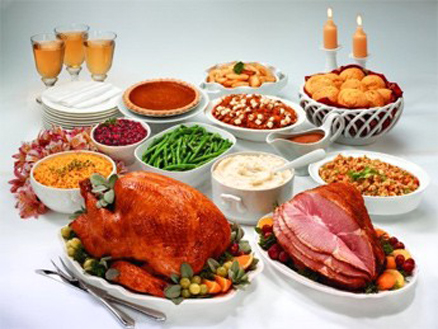Is Your Heart Ready for the Holidays?
Study finds increase in Heart Failure hospitalizations immediately following major holidays.
Thanksgiving, Christmas, New Years. These events are filled with family, friends and lots of delicious food and drink. However according to a study published in the Journal of Cardiac Failure, these events are also associated with an increase in heart related hospitalizations – primarily among patients with heart failure. While the exact causes vary from patient to patient, the top two offenders are: 1.) overeating and increased sodium consumption; and 2.) postponing medical care. It’s understandable that no one wants to miss out on the fun, so we have some tips to help keep your heart healthy while you enjoy the holidays.
1.) Be Aware of Hidden Salt. This is especially important for patients with heart failure, however everyone, even those in perfect health, should be mindful of their sodium consumption. For example, many people do not realize how much sodium is in bread. Now think about what goes into America’s favorite holiday side dish – Stuffing (or Dressing). It’s essentially made of bread (2 oz of cornbread has 340 mg of sodium) and chicken broth (1 cup of broth has 860 mg of sodium), and later topped with gravy (1/4 cup of gravy has 290 mg of sodium). Some estimates come up with more than 5,000 mg of sodium in a typical Thanksgiving meal, more than twice the recommended daily allowance. And that doesn’t include breakfast that day or your late night turkey sandwich.
What Can You Do? With homemade dishes at holiday dinners you can’t read the labels, but you can be mindful of the ingredients. Simply substituting low sodium chicken broth which only has 70 mg of sodium per cup can make a big difference and you’ll find that if you use other seasonings, like sage for example, to give your dressing some flavor that no one will notice the difference. Use this strategy with your favorite casseroles as well. Or substitute steamed green beans and baked sweet potatoes with a sprinkle of cinnamon for some of the more caloric and sodium laden side dishes. Skip the dinner rolls, after all there is already bread on your plate in the dressing. The desserts are loaded with salt too. Pumpkin pie is usually the healthiest of the bunch. Make it healthier by skipping the crust.
2.) Portion Control. At holiday dinners there is so much good food to eat most of us tend to over load our plates making an unhealthy choice even worse when it’s supersized. And American dinner plates are larger than ever, averaging 11-12 inches in diameter. Fifty years ago the average plate was only nine inches. It’s no coincidence the average waist line was also a lot smaller then.
What Can You Do? Remember that you don’t have to fill your plate. It’s ok to have some empty space. If you don’t trust yourself to leave some empty space, eat off of a salad plate. Salad plates have also grown in size, many are nearly the size of an old school dinner plate. Speaking of salad, if that is the initial course of the meal or a veggie tray is available prior to the meal, enjoy plenty of veggies to fill your tummy so you are not so hungry when it’s time for the main course. Remember that you don’t have to eat it all now. You don’t even have to have a helping of everything that is served. Plan on left overs so you don’t have to miss out on anything. Continue to enjoy your holiday favorites in moderation for the next few days.
3.) Do Something With All Those Extra Calories. Another holiday tradition is to fall asleep after the big meal. The frenzy of activity leading up to the big meal and that big dose of tryptophan from the turkey might make it seem that a good nap is inevitable. But remember that the food we eat is fuel for our bodies. If we take in more fuel than we need, it has to be stored somewhere. Think belly, thighs, love handles.
What Can You Do? Start a new holiday tradition and take a family walk. We live in Florida after all so there is no snow or ice to keep us indoors. Look for leaves changing colors or Christmas lights. Enjoy a walk on the beach without all the spring and summer crowds. A nice long walk may not burn all those extra calories, but it will definitely help. As a bonus, you’re creating more fond family memories than you would if you were asleep on the couch. And when you eventually take that nap it will be much more gratifying.
4.) Be Mindful of Symptoms & Don’t Skip Medications. If you have a heart condition, the holidays are not the time to forget about it. After all, you’ll enjoy the holidays much more if you know you have many more of them to come. Even if that means taking the time to see your doctor when there are gatherings to attend, gifts to buy or cakes to be baked. Check your blood pressure at the grocery store and don’t just dismiss high blood pressure as holiday stress. If you have heart failure, don’t forget to weigh yourself everyday and don’t ignore any shortness of breath. Your daily schedule may be thrown off a bit by travel or family events, but keep your medications on track.
With these simple tips and using good common sense, you can hopefully avoid the most common heart health pitfalls that occur over the holidays.
The physicians and staff at Cardiovascular Institute wish you a healthy and joyous holiday season.

